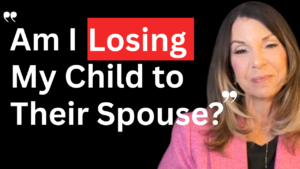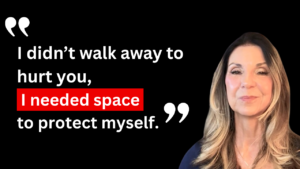Estrangement from an adult child is one of the most painful experiences a parent can go through. You may feel judged, rejected, confused, or completely broken. You may have done everything you knew how to do, and still find yourself estranged. If you’re like many of the parents I work with, you’re not even sure where to begin the repair process—or if you even should.
In this post, we’ll explore how to start family repair work in an emotionally safe way, grounded in accountability, and rooted in the reality of complex family dynamics. This isn’t about blame. It’s about building a foundation for healing—whether that leads to reconnection or simply peace within yourself.
Step One: Redefine What Repair Actually Means
Let’s start here—family repair isn’t reconciliation.
It’s not about going back to the way things were. It’s about building something new, based on deeper understanding and mutual respect. Repair work often begins with one person doing the internal work of acknowledging pain, grief, and patterns—long before any conversations happen.
This inner work isn’t wasted if your adult child isn’t ready. You’re still creating emotional clarity, resilience, and growth.
Step Two: Acknowledge the Unfairness and the Good You Did
Many parents struggle with the belief that their adult children don’t see any of the good they did. And that’s a valid feeling. You may have worked multiple jobs, protected your child from harm, and showed up in ways that weren’t easy, and now none of that seems to matter.
That’s heartbreaking. And it often feels deeply unfair.
But here’s the shift that starts repair: acknowledging that your goodness doesn’t cancel out your child’s pain. Both can be true.
You may have done your best and missed things they needed. That’s not about blame. That’s about holding a bigger, more complex truth.
Step Three: Watch Out for Echo Chambers of Grief and Blame
It’s normal to seek support from other hurting parents. But be cautious about grief communities that focus solely on blaming adult children.
When spaces become echo chambers of anger or mockery—calling adult children “brats,” “entitled,” or “spoiled”—they may unintentionally prevent healing. These narratives might feel comforting in the moment, but they also reinforce defensiveness that your adult child may already sense.
And that defensiveness is often what keeps the door to repair closed.
Step Four: Consider That Both Sides Might Be on a Spectrum
Estrangement is rarely about one moment. It’s often the result of cumulative misunderstandings, unhealed trauma, unmet needs, or ongoing ruptures that were never fully acknowledged.
In some cases, both the parent and the adult child may be operating from pain, from trauma, or even from conditions like autism, complex PTSD, or other neurodivergent dynamics.
There is no one-size-fits-all solution.
That’s why repair work must be customized, respectful, and trauma-informed.
Step Five: Begin With a Non-Pressuring Invitation
If you’ve done the inner work and feel ready to reach out, your message needs to reflect emotional safety—not a plea, not an ultimatum, but openness.
You might say:
“I’ve been doing a lot of reflecting, and I’d be open to understanding more about your experience—if and when you’re ever ready.”
This kind of message gives your adult child room to choose. And choice is foundational to repair.
What If They Never Respond?
This is the part that hurts most. Even when you’re ready, they may not be. That doesn’t mean your healing isn’t working. Repair is a long game.
You don’t have to live in shame, silence, or self-blame. But you need to live in truth—and that begins with you.
You are not alone. And repair is possible.
And if your child is ready—or even curious—you now have a more straightforward path for showing up in a way that nurtures, rather than pressures.









